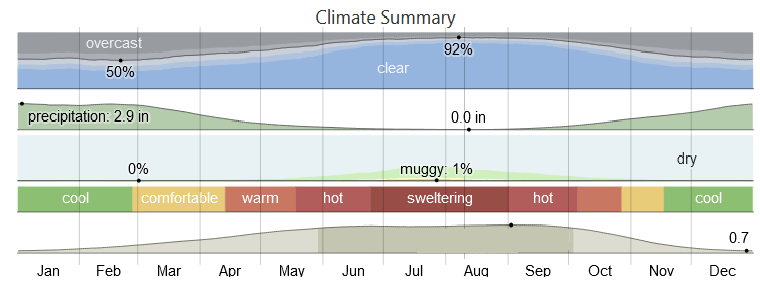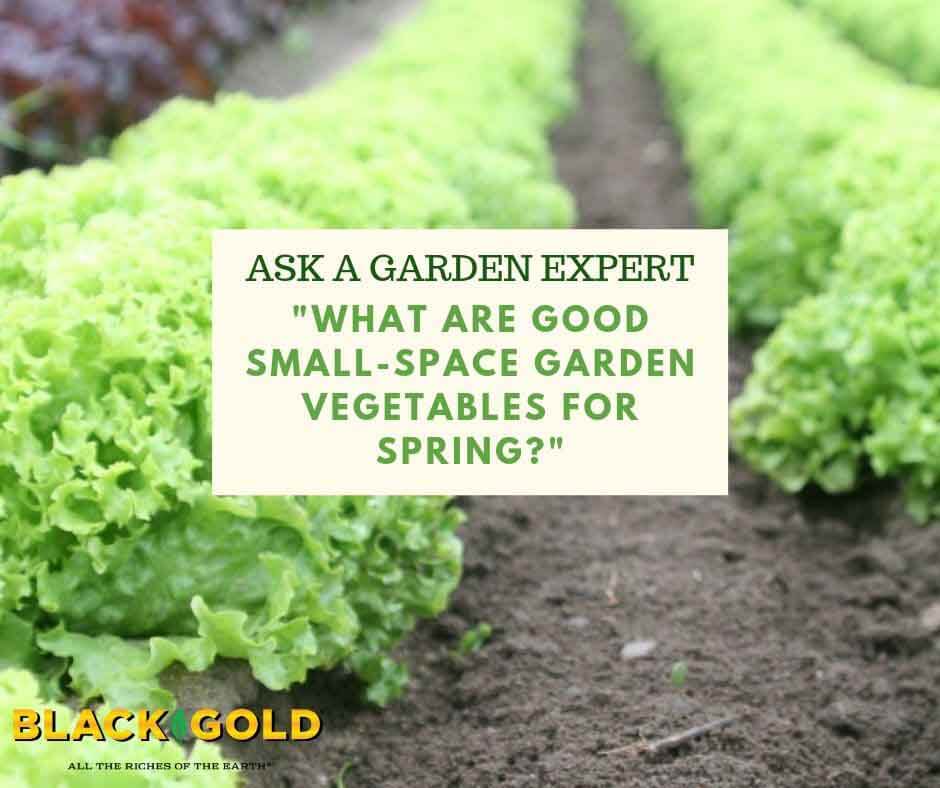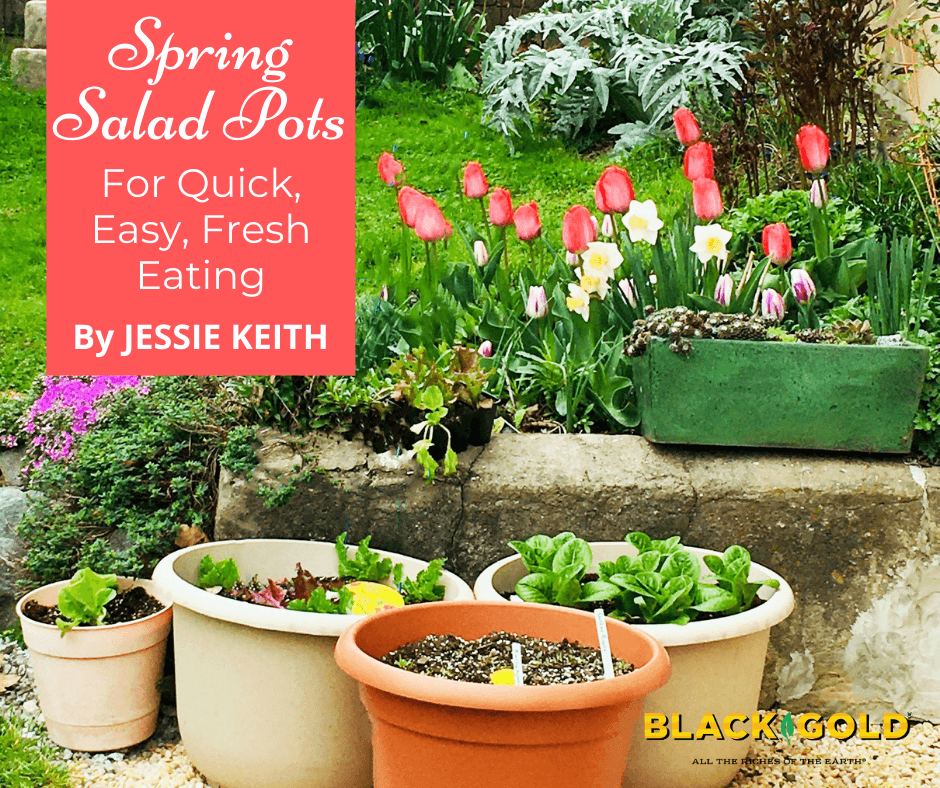
My first spring salad pots were grown in large, inexpensive plastic containers that I bought from the garden center. I filled them with some Black Gold Natural & Organic Potting Mix and added a little fertilizer. They performed so well that I couldn’t believe it. Just a few pots provided delicious salads through spring, so this year I decided to redo this year’s salad containers with a little more flair.
I took it up a notch by creating suites of well-paired greens and herbs for custom-made salad containers–one with an Asian theme, another French, and the last for the Italian palate. Large (18″ or 24″) pots are ideal for these plantings. This will ensure that you can plant enough vegetables in each pot to make several spring salad bowls. As I said, I planted mine in Black Gold Natural & Organic Potting Mix, but this year I plan to try Black Gold Raised Bed & Planting Mix. Both mixes are OMRI Listed for organic gardening. My plant food of choice is a slow-release fertilizer for vegetable growing, though I often hit my plants with some water-soluble fertilizer a week after planting to help them take off.
Asian Salad Pot
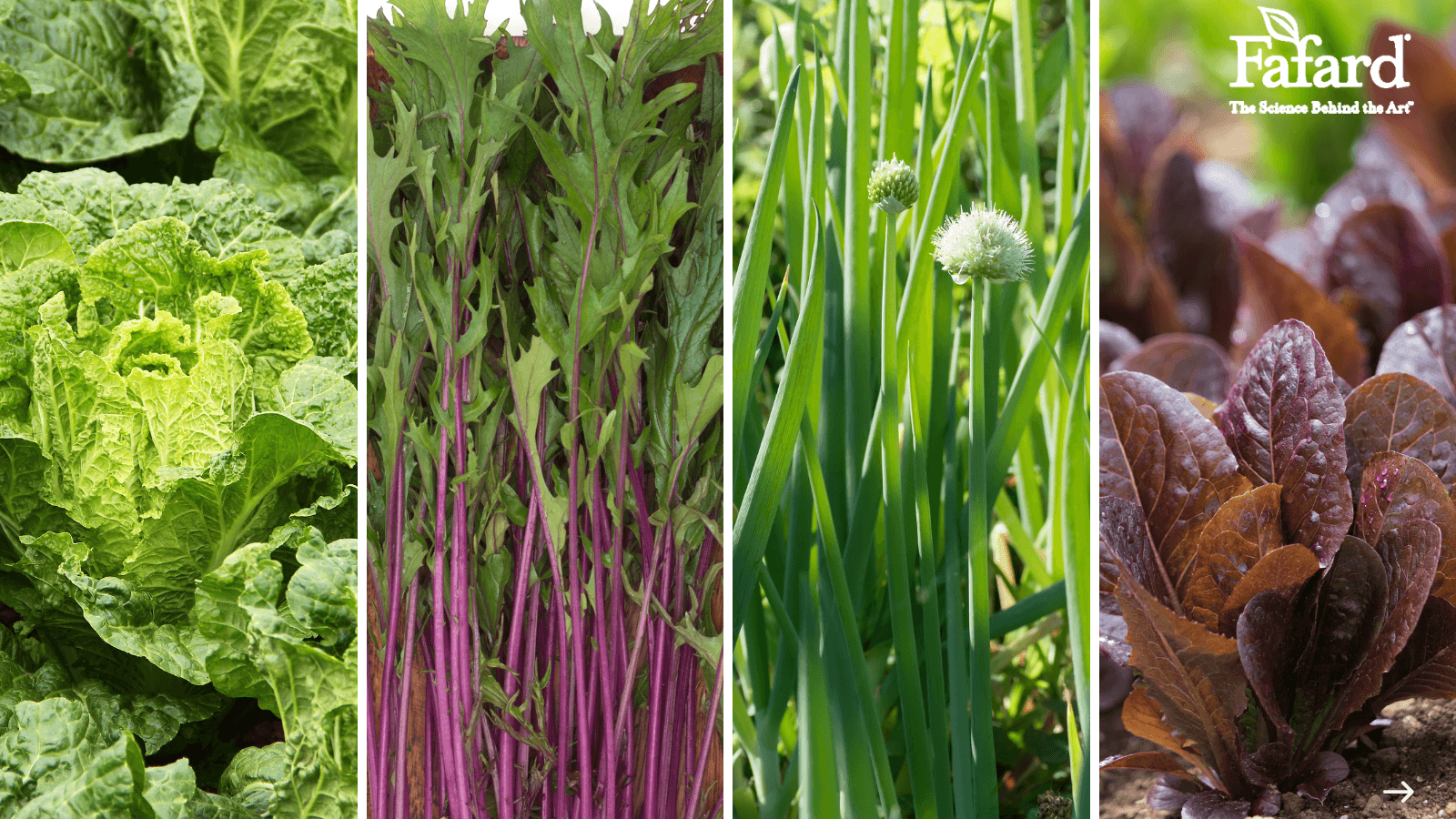
Asian Salad Pot: Spring Crisp Chinese Cabbage (63-65 days), Central Red Mizuna (40-55 days), Ishikura Improved Bunching Scallions (40-50 days), and Red Romaine Lettuce (56-60 days).
About the blend – This is a two-pot salad mix because Chinese cabbages are bulky. I am confident that the outcome will be worthy of a very tasty sesame salad dressing. The crisp, flavorful Chinese cabbage will combine nicely with the mustardy kick of the mizuna, the mild green-onion flavor of the bunching scallions along with the crunchy, sweet taste and bright color of the red romaine.
Planting tips – I recommend filling one pot with three Chinese cabbage heads with a sprinkling of mizuna around the exterior. Another pot can contain the romaine with scallions planted along the side. Be sure to space the scallions 2-3 inches apart. I always start cabbage, scallions, and lettuce plants indoors several weeks before planting outdoors. I start the seeds in 4-inch pots under grow lights. (Click here for growing tips.) Then I acclimate my seedlings to cool spring temperatures in my enclosed back porch. Scallions are often tender and slender at planting time, so be gentle with them and don’t plant their bulbs too deeply. One-half inch is perfect. The mizuna is a mustard green that can directly be sown in the pots at the time when you plant your seedlings–generally in late March or early April in my USDA Hardiness Zone 7 garden.
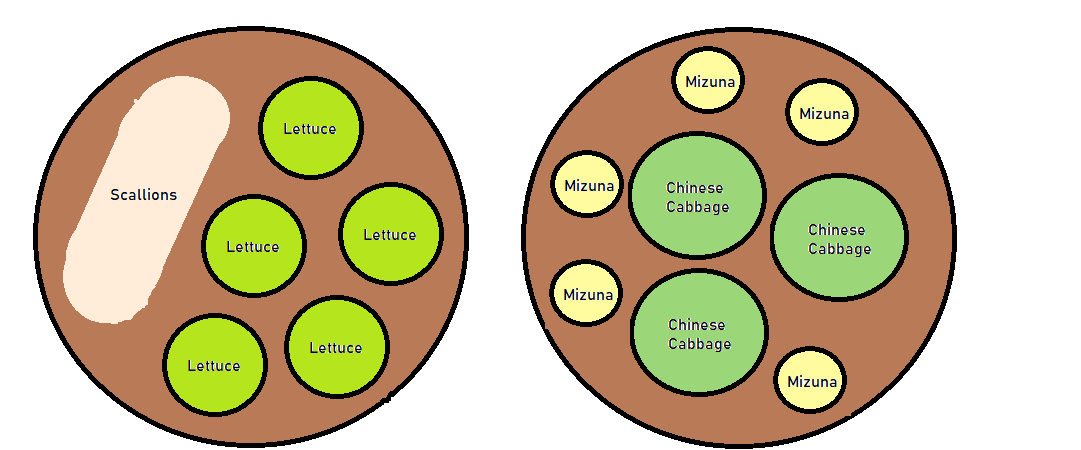
French Salad Pot
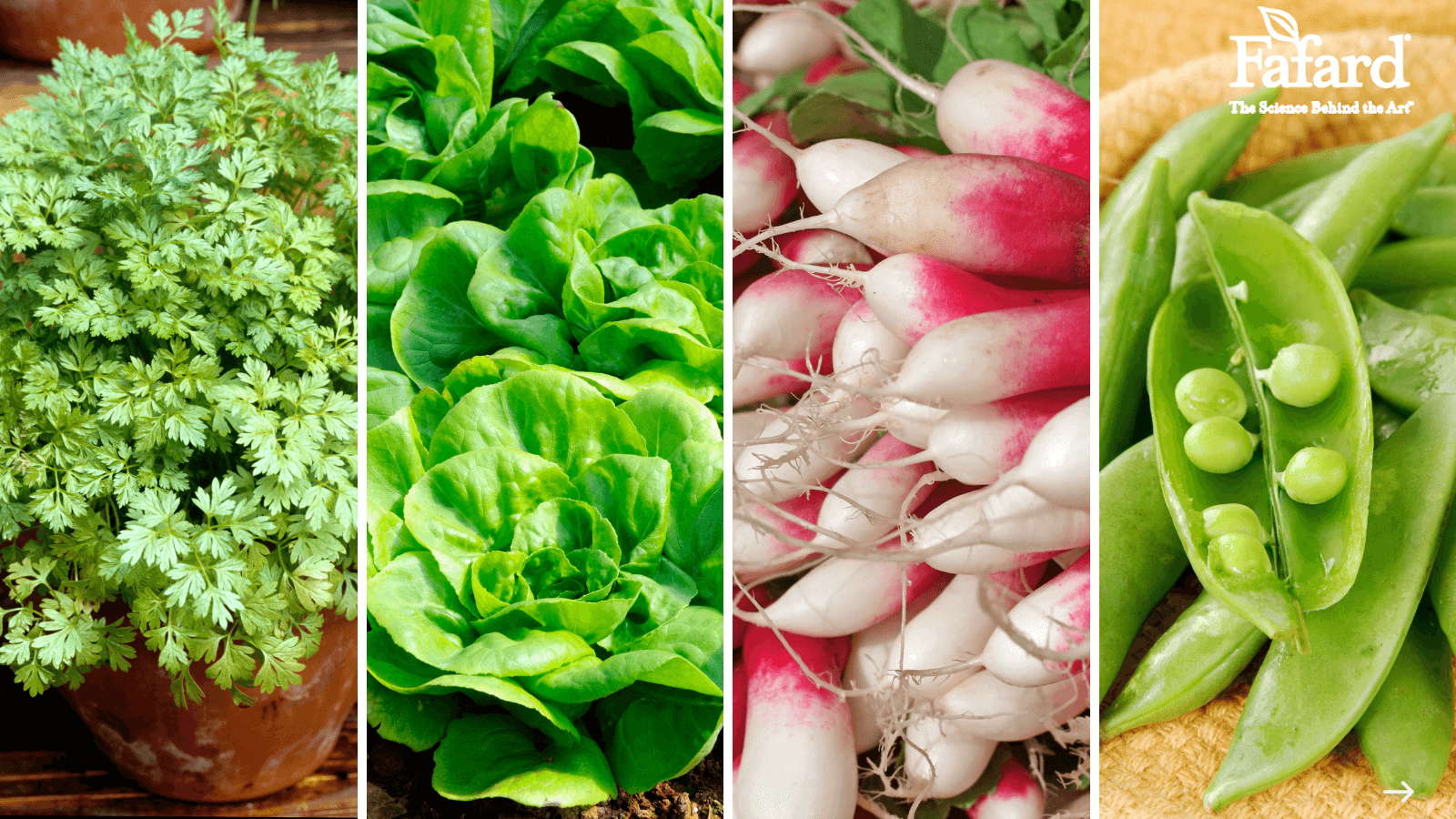
French Salad Pot: Classic Garden Chervil (60 days), Divina Butterhead Lettuce (60 to 70 days), Flamboyant French Breakfast Radish (25-30 days), and Sugar Ann Snap Peas (52-62 days).
About the blend -The sweetness of the snap peas and butter lettuce blend well with the slight heat of the fresh French breakfast radishes. Chervil is added to provide a fresh, slightly anise flavor–much like the flavor of fennel. Together they taste very excellent with a classic French dijon vinegarette. If you are not partial to uncooked snap peas, try blanching them for a minute and then immersing them in an ice-water bath.
Planting tips – I recommend three large pots for this salad blend–one for the peas (a tomato cage makes an easy pea trellis), one for the radishes, and one for the butter lettuce with two chervil plants on the side. It is best to start the chervil and lettuce indoors under grow lights, as recommended for the greens above. The radishes and peas can be directly sown in the pots. Surface-sow the radish seeds and cover them with 1/8 inch of potting mix. Plant them in circular rows 6 inches apart and then thin them to 3 inches apart after they have sprouted. The peas should be planted in a circle at a distance of 3 inches apart and 1 inch below the soil surface. Time everything well, keeping in mind that the peas and greens need more time than the fast-growing radishes.
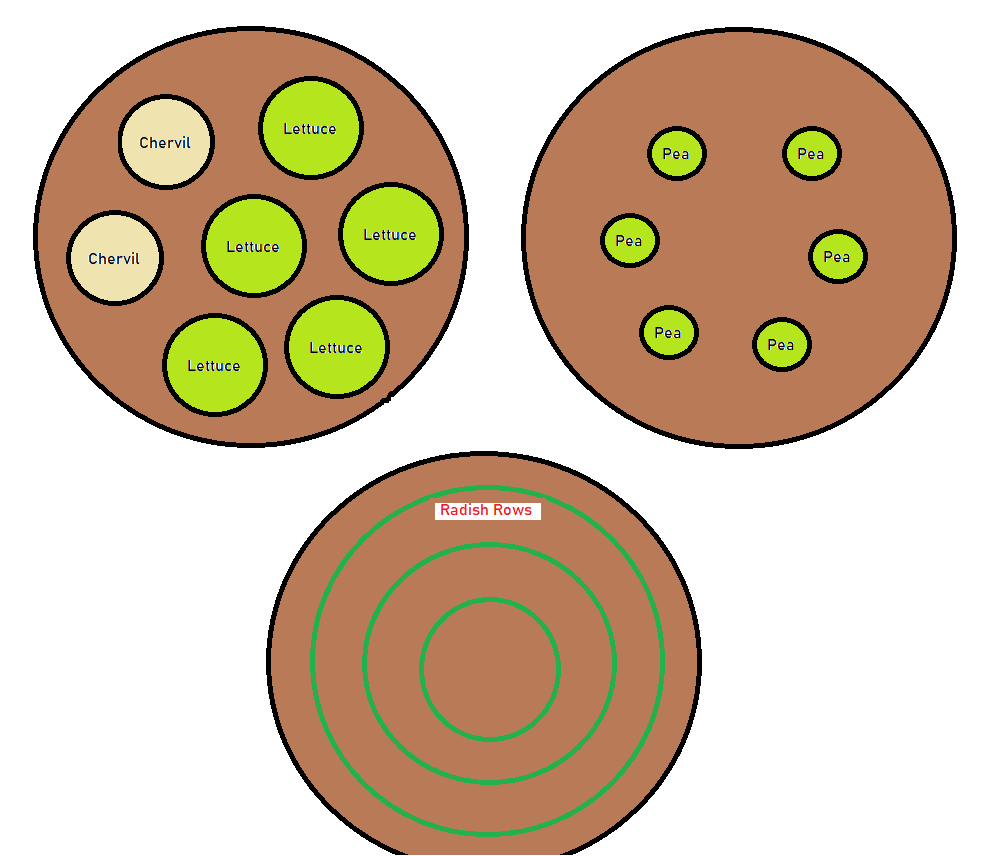
Italian Salad Pot
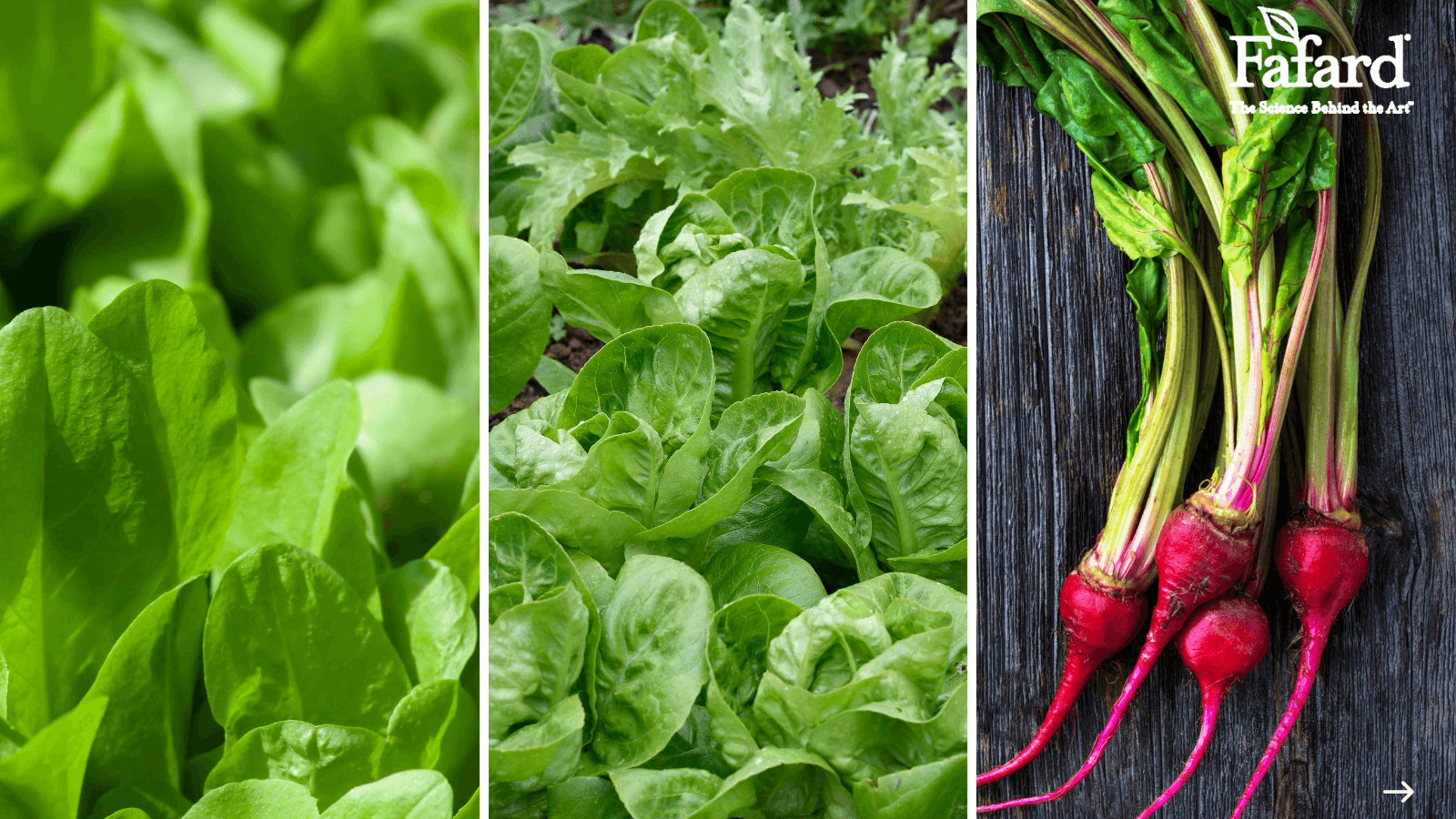
Italian Salad Pot: Chicory Bionda (35-45 days), Romaine Bionda Lettuce (55-60 days), Baby Chioggia Beets (40-55 days).
About the blend – The bitter bite of the chicory tastes nice with the sweet crunch of the romaine lettuce and sweetness of the baby beets. Chioggia beets are candy-striped with red and white bands inside, so they are as beautiful as they are delicious. The three taste very good with honey balsamic vinegarette and shaving of Parmesan cheese.
Planting tips – Two large pots are sufficient for this salad blend–one for the chicory and romaine lettuce, and one for the beets. The lettuce and chicory can be started as seedlings indoors, using the same recommendations for the two previous gardens. The beets should be directly sown in the pots. Keep in mind that the beets may germinate more slowly in cool weather, so you may want to plant them a week earlier than recommended on the packet.

To learn more about great lettuce varieties, please watch this helpful video!



